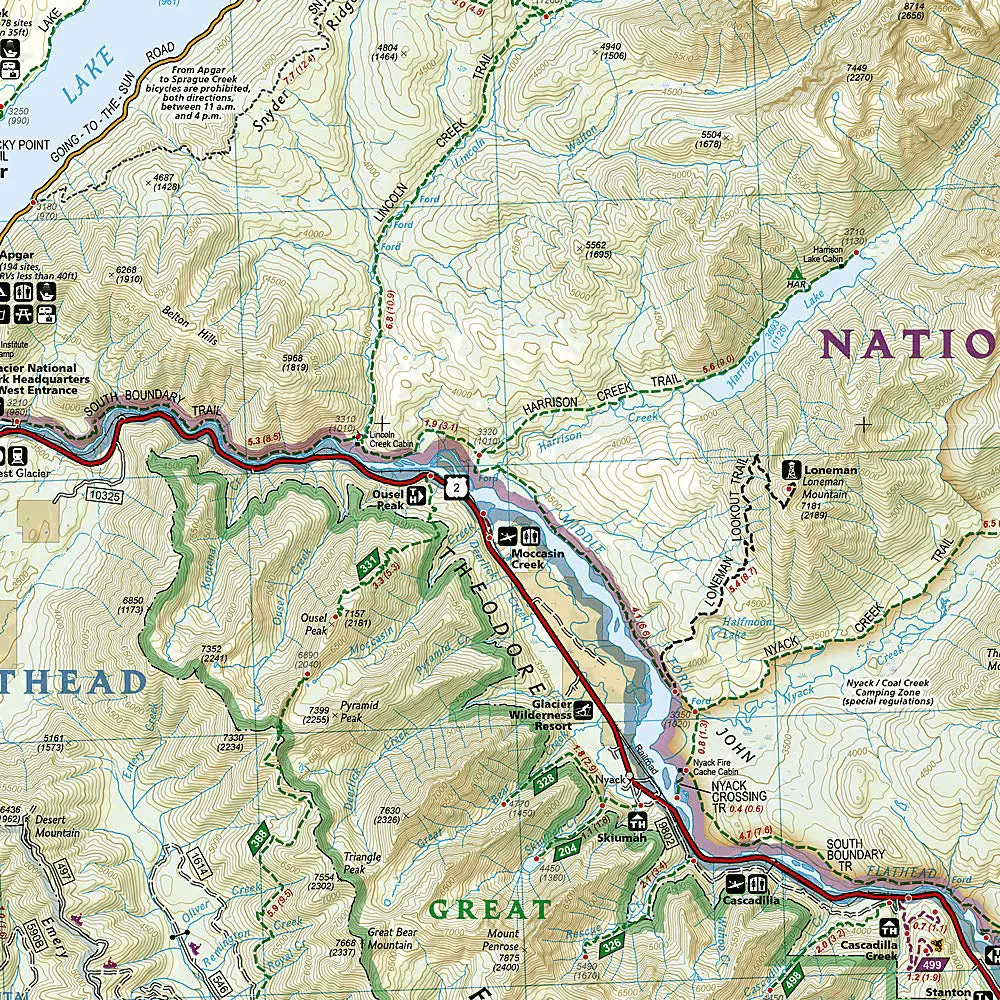TRAIL
This 7.3-mile out-and-back trail near West Glacier, Montana enters the Great Bear Wilderness through a forest of lodgepole pine trees in the Flathead National Forest.
With a few false summits, and a brutally steep incline, Ousel Peak trail is generally considered a challenging route, and takes an average of 6 hours to complete.
This is a popular hiking trail, but you can still enjoy solitude during quieter times of day. The best times to hike this trail are May through October.
description
Ousel Peak trail is steep from the start, seemingly weaving its way straight up the mountain, but the views at the top make every step worth it!
After leaving the valley floor, the forest gets wetter. At timberline, the cloud of mosquitos clears revealing sunshine, blue skies, and glorious views of the Glacier’s southern peaks.
Depending on time of year, the trail to Ousel Peak tends to start out thick and damp, but after a few miles it opens up into stunning mountain views. Dogs welcome off-leash in some areas.
View map


- Peak Elevation: meters feet
- Mountain Range: Flathead Range
- Forest: Flathead National Forest
- Wilderness: Great Bear Wilderness
- Season: Year Round
A GEOLOGICAL WONDERLAND
sandwiched between the 1,063,503-acre Bob Marshall Wilderness and the 1,012,837-acre Glacier National Park
Ousel Peak Trail Map
(123 ratings on Amazon)

Directions
Highway 2, Montana 59913
Keep your eyes peeled for mile marker 159
In summer prepare to play Frogger through a sea of mad tourists driving 80 mph toward Glacier National Park
Ousel Peak sits within the Northern Continental Divide Ecosystem of western Montana


this ecosystem is home to the highest population of grizzlies in the lower 48

in June the northern facing Ousel Peak is a lush, wet jungle teeming with life
as jungles go, it is also teeming with insects, and the deeper you hike, the damper it gets
possible encounters
On the trail
A few things you might find on the trail
Capable of honing in on the scent of carbon dioxide from a distance of up to 50 meters when identifying their victims, the sea of mini-Draculas on Ousel Peak Trail will be out for blood.
Stinging nettle (Urtica dioica) is a perennial plant that is native to many parts of the world, including Montana. It is known for the stinging hairs on its leaves and stems, which contain histamine and other chemicals that can cause a painful, itching sensation when they come into contact with skin. Despite this, stinging nettle has a long history of use in traditional medicine and is known for its medicinal properties.
Some of the medicinal uses of stinging nettle include:
Allergies: Stinging nettle has been traditionally used to treat allergies, such as hay fever, due to its antihistamine properties. It may help to reduce the symptoms of allergies, such as sneezing, runny nose, and watery eyes.
Urinary tract issues: Stinging nettle may help to treat urinary tract issues such as urinary tract infections and an enlarged prostate. It is thought to have diuretic properties that may help to flush out the urinary tract and reduce inflammation.
Arthritis: Stinging nettle has anti-inflammatory properties that may help to reduce inflammation and pain associated with arthritis. It may also help to improve joint function and mobility.
Anemia: Stinging nettle is a good source of iron, which may help to treat anemia by increasing the production of red blood cells.
It is important to note that stinging nettle should be used with caution, as it may cause allergic reactions in some people. It is also not recommended for use during pregnancy or breastfeeding. If you are considering using stinging nettle for medicinal purposes, it is always best to consult with a healthcare professional or a qualified herbalist before starting treatment.
Yarrow lines much of the Ousel Peak Trail and looks like patch of weeds with white or yellow flower tops.
Yarrow (Achillea millefolium) is a perennial herb that is native to many parts of the world, including Montana. It has a long history of use in traditional medicine and is known for its medicinal properties.
Yarrow is often used to treat a variety of conditions, including:
Wounds: Yarrow has astringent and anti-inflammatory properties that may help to speed up the healing of wounds. It can be applied topically to the skin as a poultice or tincture.
Cold and flu: Yarrow has been traditionally used to treat cold and flu symptoms, such as fever and congestion. It is thought to stimulate the immune system and help reduce inflammation.
Digestive issues: Yarrow may help to relieve digestive issues such as indigestion and bloating. It is thought to stimulate the production of bile and promote the elimination of gas.
Menstrual cramps: Yarrow may help to relieve menstrual cramps and other symptoms of premenstrual syndrome (PMS). It is thought to have anti-inflammatory and sedative properties that may help to reduce pain and relax the muscles.
It is important to note that yarrow should be used with caution, as it may cause allergic reactions in some people. It is also not recommended for use during pregnancy or breastfeeding. If you are considering using yarrow for medicinal purposes, it is always best to consult with a healthcare professional or a qualified herbalist before starting treatment.
Grizzly bears are large, powerful predators that inhabit many parts of Montana. They are found in a variety of habitats including forests, mountains, and grasslands, and are known to roam over large areas in search of food.
If you are planning to spend time in bear country, it is important to take proper precautions to avoid conflicts with bears and to protect yourself and others. Here are some tips for staying safe in bear country:
Make noise: Bears are more likely to avoid people if they know you are nearby. Use a bear bell or make other noise (e.g., talking, singing) when hiking to alert bears to your presence.
Travel in groups: Bears are more likely to avoid groups of people than individuals.
Carry bear spray: Bear spray is a non-lethal deterrent that can be used to deter bears from attacking. It is important to know how to properly use bear spray before you need it.
Keep a clean campsite: Properly store food, garbage, and other attractants to prevent bears from becoming accustomed to human food and garbage.
Be alert: Stay alert and be aware of your surroundings, especially when hiking in areas with good bear habitat.
By following these precautions, you can help reduce the risk of encountering a bear and minimize the chances of a bear attack.



